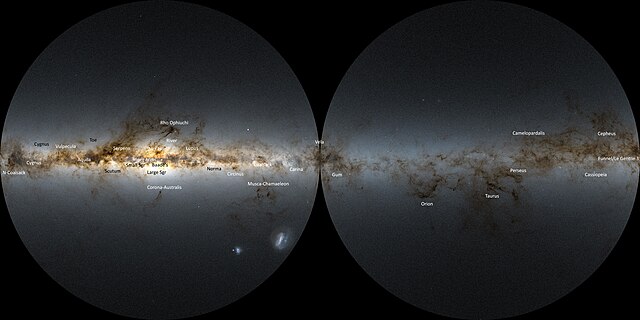Boötes is a constellation in the northern sky, located between 0° and +60° declination, and 13 and 16 hours of right ascension on the celestial sphere. The name comes from Latin: Boōtēs, which comes from Greek: Βοώτης, translit. Boṓtēs 'herdsman' or 'plowman'.
Boötes as depicted in Urania's Mirror, a set of constellation cards published in London c. 1825. In his left hand he holds his hunting dogs, Canes Venatici. Below them is the constellation Coma Berenices. Above the head of Boötes is Quadrans Muralis, now obsolete, but which lives on as the name of the early January Quadrantid meteor shower. Mons Mænalus can be seen at his feet.
The constellation Boötes as it can be seen by the naked eye
A digital rendering of Tau Boötis b
A Quadrantid captured by an all-sky camera during a 4-second exposure
A constellation is an area on the celestial sphere in which a group of visible stars forms a perceived pattern or outline, typically representing an animal, mythological subject, or inanimate object.
Babylonian tablet recording Halley's Comet in 164 BC
Egyptian star chart and decanal clock, from the ceiling of Senenmut's tomb, c. 1473 BC
The Milky Way as seen by Gaia, with prominent dark features labeled in white, as well as prominent star clouds labeled in black.
Inca dark cloud constellations in the Mayu (Celestial River), also known as the Milky Way. The Southern Cross is above Yutu, while the eyes of the Llama are Alpha Centauri and Beta Centauri.








